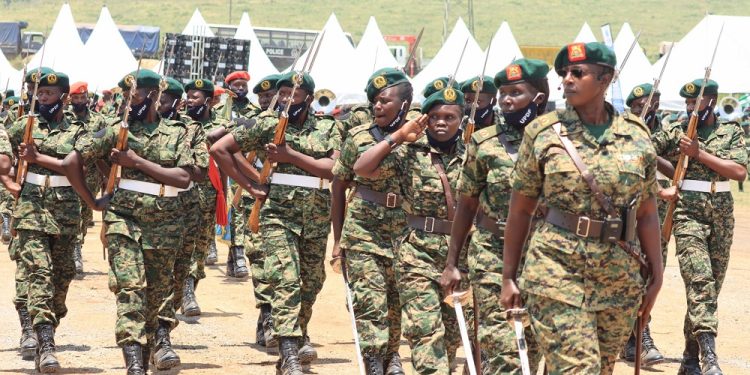A new directive from Chief of Defence Forces (CDF), Gen. Muhoozi Kainerugaba, mandating skirts for female soldiers during UPDF parades has reignited a national conversation around gender roles, military tradition, and modern uniform standards.
The controversial order, made public through the General’s official X (formerly Twitter) account, calls for an immediate shift in how female soldiers present themselves during ceremonial functions.
“All female comrades in the UPDF shall from now on march in skirts. Trousers are for men, not for women,” Gen. Muhoozi posted.
“Anyone who forces our sisters to put on trousers on parade again will have a very bad day,” he warned.
This pronouncement marks a significant departure from the UPDF’s long-standing uniform policy.
Until now, women in the force have worn combat trousers for both field operations and official events, including key national celebrations like Independence Day and Tarehe Sita.
Designed for mobility and consistency, trousers have been the default for all UPDF personnel regardless of gender, aligning Uganda’s military practices with modern global standards.
The directive has sharply divided opinion. Supporters see it as a return to African cultural values and a way to distinguish the femininity of women in uniform.
“This is about cultural pride and restoring the grace of our women in uniform,” wrote one social media user in support of the decision.
Others, however, argue that the new policy undermines decades of progress made in integrating women into the military on equal footing.
“This move feels like a step backward,” said a retired female UPDF officer. “We earned our positions by merit, not by how feminine we look on parade.”
Gender rights activists have
also weighed in, warning that enforcing skirts could signal a broader retreat from inclusive and professional standards within the security sector.
The debate echoes similar practices in other African militaries. In countries such as Ghana, Nigeria, South Africa, and Kenya, skirts are part of female soldiers’ ceremonial dress.
However, these forces often provide flexibility based on occasion and duty.





















